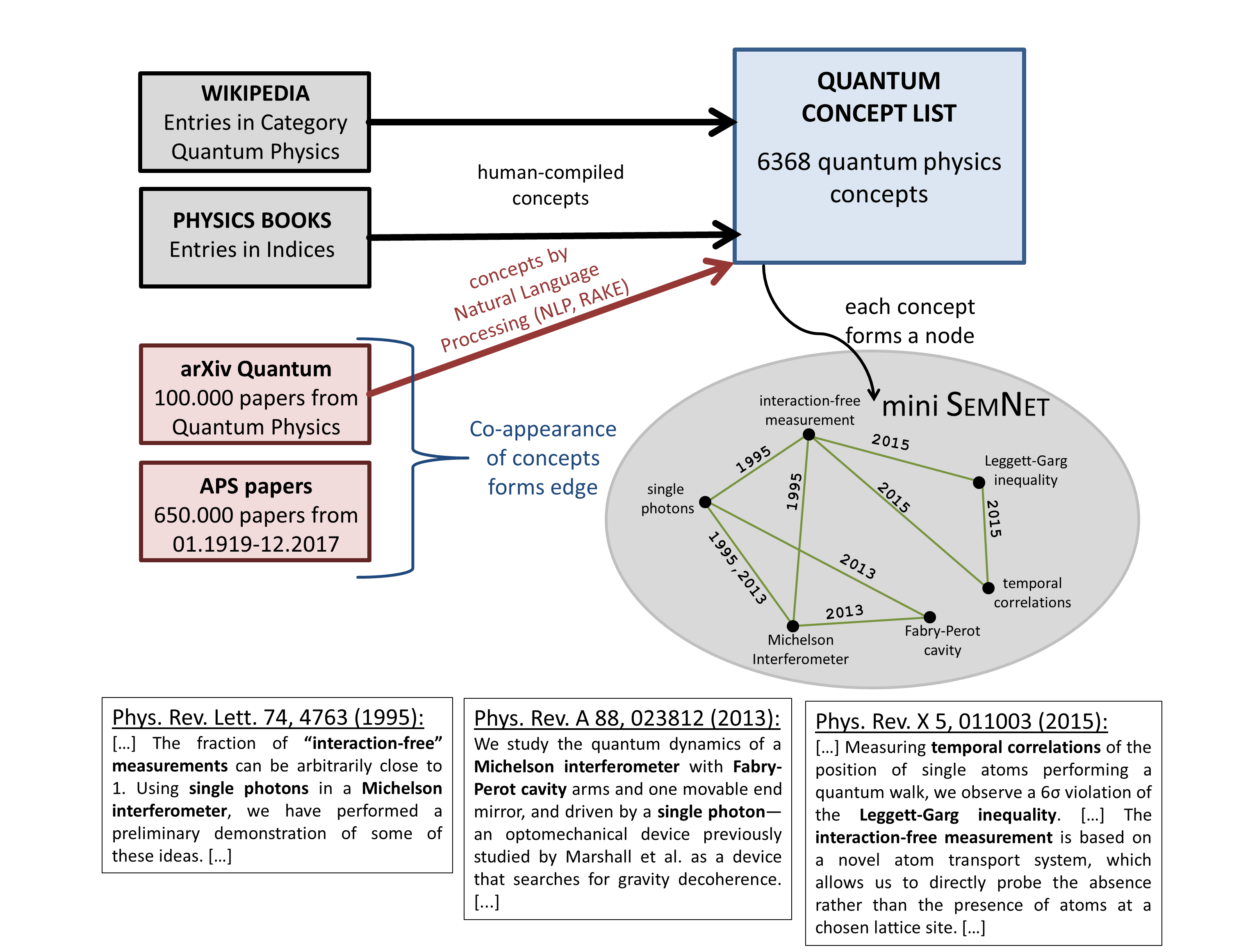Predicting Research Trends with Semantic and Neural Networks with an application in Quantum Physics
The vast and growing number of publications in all disciplines of science cannot be comprehended by a single human researcher. As a consequence, researchers have to specialize in narrow sub-disciplines, which makes it challenging to uncover scientific connections beyond the own field of research. Thus access to structured knowledge from a large corpus of publications could help pushing the frontiers of science. Here we demonstrate a method to build a semantic network from published scientific literature, which we call SemNet. We use SemNet to predict future trends in research and to inspire new, personalized and surprising seeds of ideas in science. We apply it in the discipline of quantum physics, which has seen an unprecedented growth of activity in recent years. In SemNet, scientific knowledge is represented as an evolving network using the content of 750,000 scientific papers published since 1919. The nodes of the network correspond to physical concepts, and links between two nodes are drawn when two physical concepts are concurrently studied in research articles. We identify influential and prize-winning research topics from the past inside SemNet thus confirm that it stores useful semantic knowledge. We train a deep neural network using states of SemNet of the past, to predict future developments in quantum physics research, and confirm high quality predictions using historic data. With the neural network and theoretical network tools we are able to suggest new, personalized, out-of-the-box ideas, by identifying pairs of concepts which have unique and extremal semantic network properties. Finally, we consider possible future developments and implications of our findings.
PDF Abstract